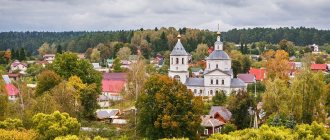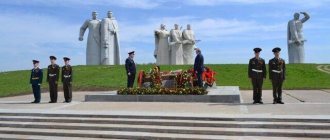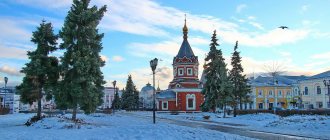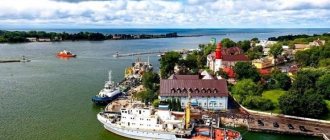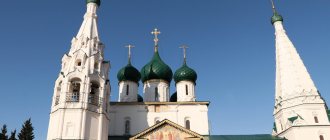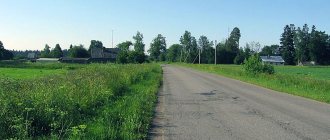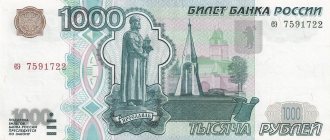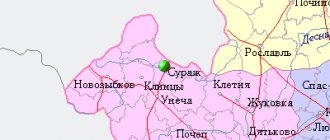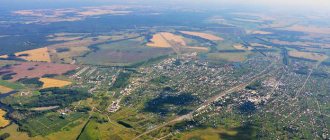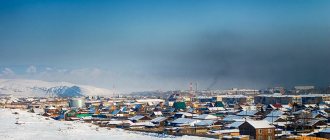Who hasn't heard of Yaroslavl! And I know him firsthand. I've been there more than once, and I adore this city. I just love to walk along it and look at it.
After all, this is one of our oldest Russian cities (so ancient that it remembers the invasion of the Tatar-Mongols ). It is part of the Golden Ring of Russia (it even claims to be the capital of this ring). Named in honor of its founder – Yaroslav the Wise. Very beautiful, with many temples, bell towers, interesting buildings, monuments, parks ... The embankment there is amazing , large, with viewing gazebos and linden trees.
huge have been shot in Yaroslavl :
- "Crew";
- "Big change";
- "Yesenin";
- “Afonya” (there is even a monument to the film);
- "Palmist";
- "Kotovsky".
It’s impossible to list everything!
In my city there is no such architectural and historical wealth, so I walk around Yaroslavl with my mouth open: I like everything there!
TO
- Kablukovo - village
- Kalachikha - village
- Kalenki - village
- Kalikino - village
- Kalinino - village
- Kalintevskaya - village
- Kamenka - village
- Karabikha - village
- Karachikha - village
- Karpovskoye - village
- Kipelki - village
- Kleschevo - village
- Klimovskoye - village
- Klintyevskaya - village
- Klyuchi - village
- Kobylyaevo - village
- Kozlovo - village
- Kozlyatevo - village
- Kazulino - village
- Kozulki - village
- Kozmodemyansk - village
- Kozmodemyansk - village
- Kolesovo - village
- Kolechkovo - village
- Kolobikha - village
- Kolokunovo - village
- Kolokunovo - village
- Colomino - village
- Komarovo - village
- Konishchevo - village
- Konishchevo - village
- Koposovo - village
- Koptevo - village
- Kopytovo - village
- Korgish - village
- Korznovo - village
- Kormilitsino - village
- Kormilitsyno - village
- Kornevo - village
- Korobovo - village
- Korovaytsevo - village
- Korolevo - village
- Koryukovo - village
- Kostino - village
- Kostyaevo - village
- Kotelnitsy - village
- Kotovo - village
- Kochaevo - village
- Kochegino - village
- Kochenyatino - village
- Kochenyatino - station
- Kraskovo - village
- Krasnaya Gorka - village
- Krasnoye - village
- Red Village
- Red Weavers - village
- Krasny Bor - village
- Krasny Bor - village
- Krasny Volgar - village
- Krasny Kholm - village
- Kryukovo - village
- Kryukovskoe - village
- Kuvshintsevo - village
- Kuznechikha - village
- Kuznechikha - village
- Kuznechikha - village
- Kuzmino - village
- Kuzminskoye - village
- Kulnevo - village
- Kurba - village
- Kurdeevo - village
- Kurdumovo - village
- Kurilkovo - village
- Kurilovo - village
- Kurilovo - village
- Kurichyogo - village
- Kurmanovo - village
- Kustovo - village
Settlements that have lost city status
| Locality | Obtaining PGT status | Abolition of PGT status |
| Red Pass | 1928 | 1944 |
| Dunilovo | 1950 | 1970 |
| Tikhmenevo | 1950 | 1999 |
| Kubrinsk | 1974 | 1993 |
| Breytovo | 1986 | 1991 |
| Red Weavers | 1927 | 2018 |
| October | 1957 | 1995 |
| Abbakumovo | 1927 | 1940 |
| Gavrilov-Yam | 1927 | 1938 |
| Busts | 1942 | 1944 |
| Sand | 1927 | 2011 |
| Berendeevo | 1944 | 1993 |
| Varegovo | 1934 | 1992 |
| Myshkino | 1943 | 1991 |
| New Nekouz | 1975 | 1993 |
| Sheksninsky | 1943 | 1944 |
| Volga | 1927 | 1996 |
| Bolshoye Selo | 1971 | 1992 |
| Great | 1949 | 1997 |
| Kupanskoe | 1949 | 1993 |
✅ If you have something to add on the topic, don’t be shy and write a comment!
Myshkin
The small town literally made itself. Only a few thousand people live here, but the number of attractions per square meter is simply off the charts. Tourists arriving by boat first of all rush to the Felt Felt Museum in Myshkin, which is conveniently located right next to the pier. On the ledge of Nikolskaya Mountain, in an ancient house, the world’s only mouse museum is located, replenished from all over the world from Japan to the USA and from France to India.
The famous mouse museum is part of the Myshkinsky Folk Museum complex. In the office of the Mouse King you can receive a commemorative ticket with the seal of the Mouse Kingdom on it. Among the less official attractions, one cannot fail to mention the Gallery of Dolls and Doll Miniatures by Olga Pavlycheva. The gallery is usually not included in official tours, but it is certainly worth a visit. All dolls and miniatures are made by hand, with great care and love. Myshkin actively uses its name in the tourism business, so sooner or later the Mouse Palace was supposed to open here (it is also called “Myshkin Chambers”), which is also significant for visiting.
Natural landscape of Yaroslavl
The places there are amazingly picturesque .
Nature is simply indescribable . What forests are around and even within the city . Many parks and areas are considered specially protected . Pine forests are especially . Although there is a lot of mixed forest . Such vegetation determines the climate of Yaroslavl. It is moderately cold there in winter, and moderately warm in summer . In summer it rains often , in winter it snows. But severe frosts , like extreme heat, are rare.
Transport links, roads and routes
On the satellite map of the Yaroslavl region you can find a well-developed transport network. A branch of the Trans-Siberian Railway runs along it. The total length of the railway track in the region is 696 km. The region is crossed by the federal highway M8 Kholmogory. The total length of highways in the region is 18,489 km.
The main airport in the region is Tunoshna. is located 18 km from Yaroslavl. The Dexter air taxi company makes regular flights on the Moscow-Yaroslavl route. By water, cargo from the Yaroslavl region can reach the Baltic, White, Black, Caspian and Azov seas.
Cities of the Yaroslavl region
There are currently eleven cities in the Yaroslavl region with a total population of 1,241,424 people. Let's look at each of them in detail.
Yaroslavl
Yaroslavl is the largest and one of the oldest Russian cities, the administrative center of the Yaroslavl region. Included in the Golden Ring program. Its historical center, located at the Strelka, the confluence of two rivers where the Kotorosl River flows into the Volga, is a UNESCO World Heritage Site.
According to the chronicles, Yaroslavl was founded in 1010 by Prince Yaroslav the Wise. About a century and a half after its founding, Yaroslavl was the lowest city of Ancient Rus' along the Volga River, which is why it was a constant target of raids by Bulgar nomads. In 1238, Batu's troops completely devastated and burned Yaroslavl. However, the city was revived as an independent principality and was one of the centers of the struggle for political leadership in Rus', until in 1463 it came under the protectorate of the Moscow principality.
During the reign of Ivan the Terrible and after the accession of the Romanovs, rich merchants flocked to Yaroslavl from all over the country. This was largely due to the fact that during the Time of Troubles, Yaroslavl was one of the cities that accepted the Second People's Militia, which was well financed by local merchants.
Thus, approximately by the middle of the 17th century, Yaroslavl entered its Golden Age: the city’s economy was on a constant rise, the local merchants generously financed the construction of luxurious churches, and thriving trade made this city one of the pillars of the Russian economy until the development of the Urals and Siberia. But despite the further slowdown in economic growth, Yaroslavl remained the commercial and industrial center of the Yaroslavl province and the entire Upper Volga until the 20th century.
Rostov
Rostov, also known as Rostov the Great (not to be confused with the much larger Rostov-on-Don), is a city in Russia located on Lake Nero, approximately 50 km south of Yaroslav. This is one of the oldest cities in Russia, whose origins are documented back in the 9th century. Rostov is part of the Golden Ring of Russia.
Rostov experienced its heyday during the reign of Prince Konstantin Vsevolodovich (1186-1218), son of Vsevolod III the Big Nest. In 1474, together with the lands of the Rostov-Suzdal Principality, the city was annexed to the Moscow Principality, and during the Time of Troubles it was plundered by the Polish-Lithuanian army.
One of the most valuable monuments of Rostov is the Rostov Kremlin, located on the shore of Lake Nero, erected in 1670–1678 during the reign of Metropolitan Jonah (1652–1690). The Rostov Assumption Cathedral is located on the territory of the Kremlin.
Gavrilov-Yam
Gavrilov-Yam is a small town with 16,536 people, located on the banks of the Kotorosl River, 46 kilometers from Yaroslavl. It is the administrative center of the Gavrilov-Yamsky district.
Gavrilov-Yam received the status of a city only in 1938, although in historical chronicles it was mentioned in the middle of the 16th century as the village of Gavrilovo, belonging to the Trinity-Sergius Monastery. The settlement received the name “Gavrilovsky Yam” in 1580, during the reign of Ivan the Terrible. Subsequently, the status of the settlement changed several times, appearing first as Gavrilo-Yamskaya Sloboda, and then as the village of Gavrilov-Yamskoye.
Residents of this small provincial settlement were engaged in fishing and hunting, logging and cheese making, and provided crossings across the Kotorosl River, which served as a trade route between Rostov and Yaroslavl. However, in the 1870s, thanks to the merchant A.V. Lokalov, a textile manufactory was opened in the city, which ensured the rapid economic and demographic growth of the settlement.
Danilov
Danilov is a city in the Yaroslavl region, located 65 km north of Yaroslavl. Founded in the middle of the 12th century as the village of Danilovskoye by Moscow Prince Daniil Alexandrovich, the youngest son of Alexander Nevsky. It was first mentioned in 1592 as Danilovskaya Sloboda. This name was often used in subsequent times.
In the 1770s, under Empress Catherine II, it received the status of a district city of the Yaroslavl governorship (later - the Yaroslavl province).
At the beginning of the 17th century, Danilovskaya Sloboda came under the intervention of Polish-Lithuanian troops, as a result of which more than half of the settlement’s population died. The population recovery began only a century and a half later, which was facilitated by the extension of the trade route from Moscow to the north.
1895 was marked by a huge fire that destroyed more than half of the city, which, of course, did not contribute to the economic and demographic growth of the settlement. By 1917, the population of Danilov was 13,000 people, and today it is 15,000 people.
We love
Lyubim is the administrative center of the Lyubimsky district of the Yaroslavl region. This is the smallest city in the Yaroslavl region and one of the smallest Russian cities in general. It is located at the confluence of the Ucha River and the Obnora River (a tributary of the Kostroma River). It borders with the city of Danilov (38 kilometers) and the Kostroma region (60 kilometers). As of 2022, the population of the town is 5 thousand people.
The city was first mentioned in chronicles in the 16th century, during the reign of Ivan the Terrible. There are no reliable sources about the founding of the settlement, but there is a legend that the king, who loved to hunt in the surrounding forests, founded a fortress here that would protect the area from Tatar raids.
The status of a county town was assigned to Lyubim in 1777 under Empress Catherine II, and the following year the city received a coat of arms.
Rybinsk
Rybinsk is the second largest city in the Yaroslavl region. It is also one of the oldest Russian settlements, first mentioned in the chronicles of Nestor in the 11th century. in 1504, the settlement, which was called “Ust-Sheksna”, was renamed “Rybnaya Sloboda”. Rybinsk, like many other cities, received its modern name in 1777 by decree of Catherine II.
Myshkin
Myshkin is a tiny town with a population of just over 6 thousand people. The former village of the economic department Myshkino was granted city status by decree of the Empress in 1777.
Pereslavl-Zalessky
Pereslavl-Zalessky is a city in the Yaroslavl region with a population of 43 thousand people. Pereslavl-Zalessky is located south of the Yaroslavl region, near the border with the Moscow region, 139 km southwest of Yaroslavl.
The city was founded in 1152 by Prince Yuri Dolgoruk as the planned capital of Zalesye. Until the 15th century it was called Pereyaslav. In 1175–1302 the city was the capital of the Northern Pereyaslavl Principality. In 1302 it became part of the Grand Duchy of Moscow. Pereslavl-Zalessky was repeatedly destroyed by the Mongols from the mid-13th to the early 15th centuries. In 1611–1612 it suffered from the Polish invasion. In 1708 the city was included in the Moscow province.
Poshekhonye
Poshekhonye is the regional center of the Yaroslavl region, located 151 km from Yaroslavl on the coast of the Sogozha River. In the 17th century, on the territory of Poshekhonye, the village of Pertoma was located, in which the voivode’s office was located. Received city status in 1777.
Tutaev
The city of Tutaev, known as Romanov-Borisoglebsk until 1918, is a small city located on two banks of the Volga River. It was founded in 1822 as a result of the merger of the cities of Romanov and Borisoglebsk, which were located on two opposite banks of the Volga. Received its modern name in 1918. It was named after a Red Army soldier who died during the Civil War.
Uglich
Uglich is a small town with a population of 32 thousand people, located 92 kilometers from Yaroslavl. Included in the Golden Ring program.
Suzdal
An article on the topic “We need to win back tourists from other regions!” Summer season in Yaroslavl
One of the most beautiful cities of the Golden Ring. It contains a whole open-air complex, where unique buildings from the 17th to 19th centuries are collected. This place is called the Museum of Wooden Architecture in Suzdal. Arriving here, you can look into the hut of a simple farm laborer and a wealthy peasant, become a guest of a merchant’s house and at the same time visit two churches. You can plunge into history by visiting the Suzdal museum “Shchurovo Settlement”. Here, in addition to ancient huts and buildings from the time of Prince Yuri Dolgoruky, there are many interactive activities in which everyone can participate.
The Intercession Monastery is worth a visit. The monastery, built in the 14th century, still holds many secrets and mysteries. For example, women from high society were exiled here for life. Also, you can begin your acquaintance with ancient Suzdal by visiting the perfectly preserved Kremlin or the Alexander Convent. The Vasilyevsky Monastery occupies a special place among others. It stands a little away from the Kremlin and shopping arcades, on the eastern outskirts of the city. A daring troika with a bright carriage, cheerfully jingling bells, lively dances and ancient rituals of folk festivals, long rows with souvenirs and pickles - all this forms the unique and atmospheric appearance of the Suzdal shopping area, which would also not hurt to visit.
Brief history of the Yaroslavl region
The territory of the modern Yaroslavl region was inhabited about 9 thousand years ago. However, it only developed in the 4th century AD. when the Slavs settled in this region. Over the course of two centuries, cities such as Rostov, Uglich, Yaroslav, Rybinsk and Pereslavl were built, which played a huge role in the further history of the country. Among the princes who ruled these lands were such great figures as Yaroslav the Wise, Yuri Dolgoruky, Alexander Nevsky, Vladimir Monomakh and many others.
At the beginning of the 13th century, these lands were captured by the Mongol horde, and the city of Yaroslavl was burned to the ground. But despite this, he never obeyed. In the 15th century, the Yaroslavl territories came under the protectorate of Moscow.
The Yaroslavl land is going through a difficult time during the Time of Troubles of the 16th century: a plague epidemic, crop failures and mass famine, the struggle for the throne and the war with the Poles, which also affected these lands. However, the Yaroslavl land survived all the disasters and in the new 17th century entered its Golden Age.
The following years of upheaval on this land occurred only at the beginning of the 20th century: revolution, civil war, economic instability and the consequences of the First World War dramatically affected the entire country.
In 1929, the Yaroslavl province became part of the Ivanovo industrial region for seven years, after which, in 1936, it regained its independence.
During the Great Patriotic War, almost the entire industry of the region, including those transferred here during WWI and the Civil War, experienced a severe crisis. There were no military operations in the region, but people worked hard to support the front-line soldiers. After the victory, enormous efforts were made to restore the industrial and agricultural spheres, and although they were ultimately justified, irreparable damage was caused to the region’s economy. As a result, in the last years of the existence of the USSR, the Yaroslavl region was almost in crisis economic conditions.
0%
T
- Tarantaevo - village
- Tarasovo - village
- Tarasovo - village
- Tarastsevo - village
- Tverdino - village
- Telegino - village
- Telishchevo - village
- Telishchevo - station
- Tenino - station
- Terentyevskaya - village
- Terekhovo - village
- Terekhovskoye - village
- Timokhino - village
- Tolbukhino - village
- Tolgobol - village
- Torgovtsevo - village
- Tochischa - village
- Troitskoye - village
- Troshcheevo - village
- Trubeninskoye - village
- Trukhino - village
- Tunoshna - village
- Turygino - village
Yaroslavl.
Yaroslavl is the main pearl in the crown of the Yaroslavl land.
Yaroslavl is a white-stone city with an extraordinary aura, a breath of history, magnificent gardens and parks, ancient and modern church domes, and rare sights.
In 1010, Yaroslavl was founded as a fortress city, and the ancient chroniclers first started talking about it in 1071. In 2010 the city turned 1000 years old!
Yaroslavl is a whole city-museum in the open air! There are about 800 historical and cultural monuments in the city! In 2005, the city of Yaroslavl was included in the list of historical monuments of the World Cultural and Natural Heritage under the auspices of UNESCO.
The main attractions of Yaroslavl:
- Yaroslavl Strelka;
- Yaroslavl Historical and Art Museum-Reserve;
- Transfiguration Cathedral;
- Church of John the Baptist;
- Church of Elijah the Prophet;
- Metropolitan Chambers;
- Volga embankment;
- New Assumption Cathedral (2004-2010);
- Church of St. Nicholas the Wonderworker (St. Nicholas Chopped City);
- Stele "Monument to the 1000th anniversary of Yaroslavl";
- Planetarium. Museum "Cosmos";
- The first private museum in Russia “Music and Time”. "Porcelain House";
- Landscape-type zoo;
- "Gazebo of Love";
- Memorial Museum-Estate of Nekrasov;
- Children's Museum "Grandfather Mazai".
Yaroslavl Strelka is the site of the founding of Yaroslavl on the Upper Volga by Prince Yaroslav Vladimirovich as the Volga outpost of Rostov the Great.
Strelka is a high cape at the confluence of the Volga and Kotorosl rivers.
The Yaroslavl Strelka gives rise to a whole ensemble of churches that are located throughout the Volga embankment. On the territory of Strelka there are the Metropolitan Chambers and the Church of St. Nicholas the Wonderworker (St. Nicholas the Rubeny Gorod) built in 1695. The Yaroslavl Spit was transformed for its 1000th anniversary: a snow-white new Assumption Cathedral was built and a 20-meter Stela was erected - “Monument to 1000 Years of Yaroslavl” ! Today Strelka is decorated with fountains and a beautiful landscaped park. Here city residents and numerous tourists can admire the daytime and evening light and sound show of singing water.
Yaroslavl Strelka, “Monument to 1000 years of Yaroslavl”!
On the Volga Embankment , the “Gazebo of Love” is comfortably located - a popular place of solitude since 1840 for citizens and guests of Yaroslavl.
Spaso-Preobrazhensky Monastery. Currently it has the status of the Yaroslavl Historical and Art Museum-Reserve. The Spaso-Preobrazhensky Monastery is famous for its main temple - the Spaso-Preobrazhensky Cathedral. The Transfiguration Cathedral is the oldest building in Yaroslavl. It was erected in 1506-1516 on the foundations of the original construction of 1216-1224. Nearby is the bell tower of the cathedral. The belfry of the ball was built in the first half of the 16th century. It was built on in 1808, and finishing work was completed by 1824. Now there is an observation deck here. It offers a stunning view of the domes, bells and the entire architectural ensemble of the monastery. On the territory of the complex there is an ancient library, Abbot's Chambers (17th century), Refectory and Cross Church (16th century). “The Tale of Igor’s Campaign” is the most famous historical monument of ancient Russian literature. It was found in the early 90s of the 18th century by the collector of Russian legends, Count A.I. Musin-Pushkin right here in the Spaso-Preobrazhensky Monastery. The monument “The Oath of Prince Pozharsky” solemnly greets visitors to the museum-reserve. It was installed in 2010 on the territory of the Spaso-Preobrazhensky Monastery for the 1000th anniversary of Yaroslavl.
The Church of John the Baptist is a fantastic silhouette and the only 15-domed temple in ancient Russian architecture, built in the 17th century. The Church of John the Baptist is located on the banks of the picturesque Kotorosl River in Tolchkovo. This is a monument of world significance, recommended by UNESCO for showing to tourists. It surprises with its brick patterns and tiles. In terms of the number of mural paintings based on Biblical scenes, and there are about 500 of them, this temple is the very first in the world! The most significant of them were decorated in the form of crowns of silver coinage in the 18th century. Sixteen of the best masters, under the guidance of the hereditary icon painter Dmitry Grigoriev-Plekhanov and the young icon painter Fyodor Ignatiev, were engaged in its interior wall painting. This amazing work was completed in just one year (from June 5, 1694 to July 6, 1695). The temple fascinates with its carved golden iconostasis from 1701 in the Baroque style, and in the chapel of the Kazan Wonderworkers with a unique carved gate from the mid-17th century. At the beginning of the 18th century, a six-tier bell tower in the Moscow Baroque style was built next to the church. The church and bell tower look like a picturesque union; they are the tallest in Yaroslavl (up to 45 meters)! The image of the “Church of John the Baptist”, as a symbol of “the most Russian”, appeared on the main popular banknote of the 21st century - the 1000-ruble Russian banknote. And today, against the backdrop of nature with paths overgrown with grass, this temple looks especially majestic and unique!
Church of Elijah the Prophet (1647-1650) is the most beautiful place in Yaroslavl! The Church of Elijah the Prophet is the main architectural structure of the center of Yaroslavl. The iconostasis of the central temple of the church is unique, and the interior wall paintings and the “Harvest” fresco from 1680 are also impressive. The Church of Elijah the Prophet is the center of the square of the same name according to the reconstruction plan of 1778, from which the streets radiate. The Temple of Elijah the Prophet is valuable because it has retained its original appearance and outwardly resembles the picturesque mansions of the 17th century. This 4-pillar, five-domed temple on a basement is surrounded on three sides by a two-tier gallery, to which two openwork porches in the form of “houses” lead. All architectural details are designed to emphasize its lightness and upward aspiration. The tented bell tower is adjacent to the northern corner of the temple. On major Christian holidays during the summer season, church services have been held since 1989, when the main altar of the church was consecrated again.
Church of Elijah the Prophet in Yaroslavl
The Metropolitan Chambers opened on April 18, 2012 after renovation and delight citizens and tourists with the updated interior of the halls and modern lighting. The walls of each room have their own individual color. Here is the exhibition “Old Russian Art of the 13th-17th Centuries”. In three halls icons are presented according to the time of their creation, and in the fourth – original icons. A new “Hall of Miniatures” has opened in the department of ancient Russian art of the Yaroslavl Art Museum. The hall where the icon “Savior Pantocrator” is displayed - one of the most ancient icons before the “Mongol era”, work from the beginning of the 13th century (there are only 25 of them in the world), is designed in noble, regal burgundy tones. The icon “St. Nicholas” was restored using the layering method. Initially, two layers of the image were applied to it. Here you can admire the 16th century icon of Our Lady of Yaroslavl, who is the patroness of the city. On the icon “Our Lady of Tolga” you can see an image of the Yaroslavl Kremlin and the ancient Assumption Cathedral of the 17th century. The Golden Hall of the Metropolitan Chambers displays icons painted during the “Golden Age” of Yaroslavl (17th century).
On the territory of the Yaroslavl region there are 250 museums , including the first private museum of post-Soviet Russia “Music and Time”, operating since November 1993. The Music and Time Museum is a small mansion on the Volga Embankment. Collected here are: bells and bells, music boxes and organs, antique records and gramophones, musical instruments, clocks and icons. All exhibits are active and in working condition. In the courtyard of the mansion there is a porcelain museum “Porcelain House”. The Music and Time Museum is the brainchild of its creator, collector, actor-magician and director, John Mostoslavsky. Also of interest to tourists and children are: the Nekrasov Memorial Museum-Estate and the Ded Mazai Children's Museum.
Memorial Museum-Estate of Nekrasov in the Yaroslavl region
In Russia, the first public theater was opened in Yaroslavl in 1850 . In 1911 its new building was built. In 1964 it was reconstructed. Today the theater has two halls: Main (with 931 seats) and Chamber (with 120 seats). International theater festivals are held here.
For the 1000th anniversary of Yaroslavl, a “Planetarium” was built in the city - the most modern building of its kind in Russia. The Cosmos Museum was opened in honor of the first female cosmonaut Valentina Tereshkova, who flew into space on the Yaroslavl "Chaika".
A landscaped zoo with open enclosures and the Yaroslavl Children's Railway will appeal to children and adults!
Planetarium and Museum "Cosmos" in Yaroslavl
There is Tunoshna airport in Yaroslavl. There are regular flights to Yaroslavl from St. Petersburg, Kazan, Sochi, Anapa, Simferopol and other Russian cities. Prices for air tickets to Yaroslavl and flight schedules. The most convenient way to get from Moscow to Yaroslavl is by train; the minimum travel time is 3 hours 18 minutes. The city of Yaroslavl offers its guests more than 300 types of accommodation. Prices for apartments and hotels in Yaroslavl.
Tags
map of Russia city of Russia Russia Russia Russia Russia Russia Russia Russia Russia 264 km 18 km 264 km 89 km 87 km 227 km 214 km 228 km 194 km 195 km by city population city of Russia City nearest cities
populationtutaevrybinskrostovchurchsiteuglychborisoglebskyreservepereslavlzaleskiymoredistrictgavrilovthisyearrussianriverlocalispeopleinterestingrostoviscreatednewvolgegreatplacesdistancemonumentsonlyothercommentyearhistoricalterritorymoscowtheirsettlementseecollectionsourceonelistarchitecturecanrubleworktelephone
Yaroslavl region - Yaroslavia.
The Golden Ring is a world famous tourist route in Russia. The classic route Golden Ring of Russia includes, among other things, the Yaroslavl region and its cities: Yaroslavl, Rostov the Great, Pereslavl-Zalessky.
Yaroslavia is an ancient Russian land, and Yaroslavl is the first Christian city on the Volga .
Golden domes of churches, cathedrals, monasteries, snow-white chambers, historical monuments of the ancient Russian state and the modern appearance of cities attract tourists from all over the world like a magnet. But this region is famous not only for its temples. The vast expanse of the Rybinsk Reservoir attracts fishermen, and the forests attract lovers of the beauty of nature. The Volga embankment is a great place for a summer beach holiday! The Yaroslavl Children's Railway will impress children and adults!
The main gathering place for tourist groups is Moscow. Excursions around the Yaroslavl region depart from Moscow year-round by bus. From May to October, a river cruise along the Volga, including the ancient cities of the Yaroslavl region, is possible.
Five of the 11 cities of the Yaroslavl region are located on the Volga River: Ryabinsk, Tutaev (Romanov-Borisoglebsk), Myshkin, Uglich, Yaroslavl. The history of the ancient city of Mologa, which was flooded in 1940 during the construction of the Rybinsk Reservoir, is unique and tragic. The name “Russian Atlantis” was assigned to the disappeared city of Mologa.
